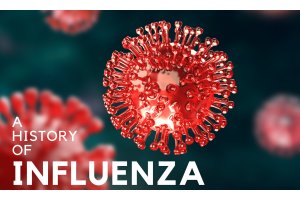Top 10 Germs in Cannabis That Can Make You Sick
Many people are concerned about what kinds of microorganisms
might be lurking in their cannabis products. Growers and cultivators are trying
their best to understand how these contaminants, or “bugs,” may be getting into
their products. Testing labs are working hard to properly screen and identify
the worst offenders, even when they are not required to by the local
jurisdiction. At the end of the day, everyone is chasing the same goal: safe cannabis
for the consumer.
10. Mucor spp.
This ubiquitous mold is found almost everywhere and rarely
presents a problem for most of us. The strains of Mucorales that have the
potential to make you sick are most often of the genera Rhizopus, Mucor,
and Rhizomuco. A cancer
patient diagnosed with this fungal infection died earlier this year and the
infection was associated with medicinal marijuana use. [1] While
a mucormycosis or zygomycosis
infection is rather rare, the consequences can be very dangerous - especially
since those most susceptible to the toxic mold are immunocompromised patients.
Mucor spp. currently lacks screening requirements
in most states.
9. Penicillium spp.
We can thank certain species of this mold genus for saving millions of lives through the advent of the antibiotic penicillin that this organism produces. However, there are other members of this mold genus that are known as mycotoxin producers and pathogenic. The most important mycotoxins from Penicillium are ochratoxin A (OTA) and patulin. Many jurisdictions require screening for the mycotoxins, but the parent organism still remains largely unchecked. The effects of these toxins on human health have not been thoroughly studied; however, it has been linked to kidney disease. Conversely, its effect on animals is well known and has been proven to be a potent renal carcinogen.[2] Let us not forget, humans are not the only patients and consumers here; the sale of cannabidiol, commonly known as CBD, to the pet market, has grown over 400% since 2017. [3]

Peniciliium spp. currently lacks screening requirements
in most states.
8. Klebsiella spp.
This is another organism that has been isolated from cannabis. [4] This bacterium is present in soil and sometimes used in agriculture to increase crop yields. Klebsiella bacteria also live in the digestive tract which means it can spread from human to human. Patients infected with the bacteria have the potential to pass the disease on to others in the environment. This bacterium is a major concern in medical settings and can be life-threatening for many long term care patients who may have weakened immune systems or are on long course antibiotic treatments. Infection can lead to pneumonia, bloodstream infections, wound or surgical site infections, and meningitis.

Klebsiella currently lacks
screening requirements in most states.
7. Clostridium botulinum
This killer bug is of greatest concern when talking about edibles such as cannabutter (cannabis-infused coconut oil), peanut butter, or other dense edible material that allows for the formation of anaerobic, or low oxygen, pockets. This bacterium goes a step further when the conditions for survival are poor- it releases spores. The spores of C. botulinum have hard coatings which allow them to remain dormant and survive for years. This bacterium is found in soil and should be a major concern for those producing certain cannabis-infused edibles.

Clostridium botulinum currently
lacks screening requirements in most states.
6. Pseudomonas aeruginosa
This is a pathogen that thrives in moist soil, plants, and water. A cannabis cultivation facility provides the ideal conditions for proliferation. The problems from this bacterium are wide-ranging and could gravely impact our most vulnerable patients. We have a case of necrotizing pneumonia associated with the regular use of cannabis in a water pipe. [5] The medical issues resulting from a P. aeruginosa are wide-ranging and include soft tissue infections, bone and joint infections, gastrointestinal infections, respiratory infections and more. As with most of the other offenders, hospital settings and immune-compromised patients are at the highest risk, especially AIDS and cancer patients. Since we know these patients are looking to cannabis products as part of their treatment plan, it is important that the medicine is proven safe. This bug is screened for in a small handful of localities but it makes sense to broaden the scope of testing for this organism.

Pseudomonas aeruginosa currently
lacks screening requirements in most states.
5. Staphylococcus aureus
There is some encouraging early evidence that CBD may help in the battle against drug-resistant bacteria.[6] That said, S. aureus is transmitted from humans onto finished goods. Methicillin-resistant S. aureus (MRSA) as a foodborne illness has been documented to be on the rise. [7] Infections from the bacteria can cause severe food poisoning and gastrointestinal illness. This is of special concern for prepared or ready-to-eat foods. When finished goods are packaged and stored for sale, the GMP environments in which these activities are taking must be strict and vigilant. While we may have had an ingredient pass initial testing, do we properly understand the critical points in our processes that could possibly introduce contamination to a product?

Staphylococcus aureus currently
lacks screening requirements in most states.
4. Salmonella spp.
Since we have had outbreaks associated with Salmonella in cannabis,[8] this pathogen is very regularly looked for in almost every regulated market that requires cannabis testing. Salmonella is an organism that can be spread to the plant through the agricultural process or through improper handling of other ingredients when preparing edibles. A run-in with Salmonella can result in food poisoning symptoms and severe dehydration. Some serotypes of Salmonella enterica are the cause of the life-threatening illness Typhoid fever. We should be looking for this particular organism in dried cannabis flower and cannabis edibles.

Salmonella spp. is commonly tested in most states.
3. Escherichia Coli
E. coli is an organism that is found in the gut of many animals and easily contaminates soil and water. Natural fertilizers applied to the plant can also be an open door for this bug. Those who become ill from E. coli may experience anything from gastroenteritis to respiratory infections. Certain strains of E. coli produce a toxin that causes severe diarrhea and can, in some cases, cause kidney damage. The presence of E. coli on cannabis products has been confirmed by several independent testing labs. We should be concerned about finding E. coli in both raw flower products as well as edibles.

E. coli is commonly
tested in most states.
2. Listeria spp.
Listeriosis is an infection caused by the bacteria Listeria monocytogenes. Listeria may infect many different systems in the body, such as the brain, spinal cord membranes, or the bloodstream. It can also lead to spontaneous abortion in pregnant women. Listeria bacteria can be found in water and soil, both of which are necessary when cultivating cannabis. Listeria is a very common pathogen of concern in food testing and is very carefully screened for in many food processing plants. We need to be sure that we are looking for this pathogen in medicines that are made available to cancer, transplant, and HIV patients, who are at a higher risk for contracting the disease.

Listeria currently lacks
screening requirements in most states.
- Aspergillus spp.
Aspergillus molds are the most common pathogens of concern in cannabis products today. Aspergillus is a potentially pathogenic mold that can cause a lung condition known as Aspergillosis. Aspergillosis is responsible for at least one documented death of an immunocompromised cancer patient who was using cannabis products for the treatment of symptoms.[9]
Aspergillus has
four main species of concern: Aspergillus
niger, Aspergillus flavus, Aspergillus terreus, and Aspergillus fumigatus. Many regulated states require testing for
Aspergillus but only a few require speciation of the “Big Four.”
These molds are especially troublesome for pediatric and immunocompromised patients. They produce mycotoxins that will persist even if the mold has been killed in the finishing process. Little is known about the virulence of the mycotoxins or how to remediate them.

Aspergillus spp. is commonly tested in most states.
I consider these the top 10 organisms most likely to contribute to the overall decline of health in patients using cannabis products in their treatment program. I have had the great privilege to work with cannabis labs across every major market including Canada. The labs and growers I have worked with have been open about what they are finding and where. Our industry needs to be sure we are screening the right products for the right organisms in the right way and at the right time. As advocates for cannabis as medicine, it is important that we be vigilant when it comes to organisms that could compromise the health of our patients and consumers.
Jessa Youngblood is the cannabis industry specialist at Hardy Diagnostics. She sits on the AOAOC CASP committee for Microbial Contaminants Working Group as well as the NCIA Scientific Advisory Committee. Jessa has a passion for safe access to cannabis medicine and regularly leads webinars and training to support the development of cannabis microbiology testing programs across the US and Canada.
[1] https://www.ncbi.nlm.nih.gov/pmc/articles/PMC6330507/
[2] https://www.ncbi.nlm.nih.gov/pmc/articles/PMC4247821/
[3]https://www.cnbc.com/2019/05/03/pets-are-hot-new-customer-for-cbd-market-as-owners-use-it-for-anxiety.html
[4] https://health.ucdavis.edu/publish/news/newsroom/11791
[5] https://www.ncbi.nlm.nih.gov/pmc/articles/PMC5756717/
[6] https://www.ncbi.nlm.nih.gov/pubmed/18681481
[7] https://www.ncbi.nlm.nih.gov/pubmed/22850394







